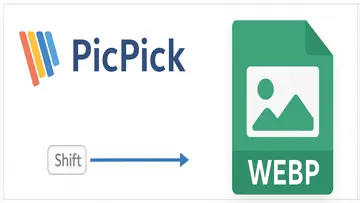AutoVer is a useful program developed by AutoVer that allows users to backup and synchronize files and folders automatically. It is especially helpful for individuals who work with important files that need to be saved often in case of unexpected data loss.
One of the great features of AutoVer is its ability to detect changes made in selected directories and automatically back up the modified files to a target directory or drive. The program also provides users with flexible backup options such as selecting specific file types to backup or exclude, as well as the ability to specify how frequently backups are made.
AutoVer runs discreetly in the background and can be set up to display notifications when backups are successful or encounter an error. The program offers a simple and easy-to-use interface, where users can manage their backups easily and view detailed logs of backup activity.
In summary, AutoVer is a versatile program for backing up and syncing files automatically, making it an essential tool for individuals who deal with important files on a daily basis.
One of the great features of AutoVer is its ability to detect changes made in selected directories and automatically back up the modified files to a target directory or drive. The program also provides users with flexible backup options such as selecting specific file types to backup or exclude, as well as the ability to specify how frequently backups are made.
AutoVer runs discreetly in the background and can be set up to display notifications when backups are successful or encounter an error. The program offers a simple and easy-to-use interface, where users can manage their backups easily and view detailed logs of backup activity.
In summary, AutoVer is a versatile program for backing up and syncing files automatically, making it an essential tool for individuals who deal with important files on a daily basis.
Przegląd
AutoVer to Freeware oprogramowanie w kategorii Narzędzia Systemowe opracowane przez AutoVer.
Najnowsza wersja AutoVer jest 1.4.0, wydany na 30.04.2010. Początkowo był to dodane do naszej bazy na 30.10.2007.
AutoVer jest uruchamiany w następujących systemach operacyjnych: Windows.
AutoVer nie ma zostały ocenione przez naszych użytkowników jeszcze.
Najnowsze recenzje
|
|
KMPlayer
Potężny odtwarzacz multimedialny dla systemów Windows i Mac |
|
|
Realtek High Definition Audio Driver
Niezbędny sterownik audio dla lepszej jakości dźwięku |
|
|
Windows PC Health Check
Zadbaj o płynne działanie komputera dzięki funkcji Windows PC Health Check! |
|
|
Canon MF6500 Series
Wydajne i niezawodne drukowanie dzięki serii Canon MF6500 |
|
|
MyKeyFinder
Bez wysiłku odzyskaj utracone klucze licencyjne oprogramowania za pomocą MyKeyFinder |
|
|
Mobile Broadband HL Service
Pozostań w kontakcie w podróży dzięki usłudze Mobile Broadband HL |
|
|
UpdateStar Premium Edition
Aktualizowanie oprogramowania nigdy nie było łatwiejsze dzięki UpdateStar Premium Edition! |
|
|
Microsoft Visual C++ 2015 Redistributable Package
Zwiększ wydajność swojego systemu dzięki pakietowi redystrybucyjnemu Microsoft Visual C++ 2015! |
|
|
Microsoft Edge
Nowy standard przeglądania stron internetowych |
|
|
Google Chrome
Szybka i wszechstronna przeglądarka internetowa |
|
|
Microsoft Visual C++ 2010 Redistributable
Niezbędny składnik do uruchamiania aplikacji Visual C++ |
|
|
Microsoft Update Health Tools
Microsoft Update Health Tools: Upewnij się, że Twój system jest zawsze aktualny! |





